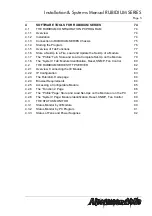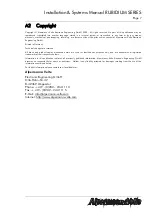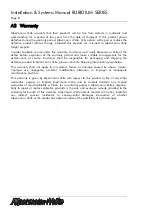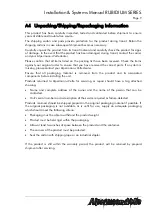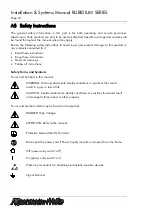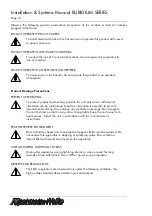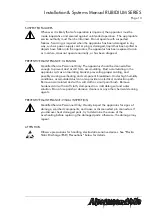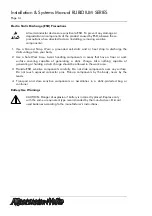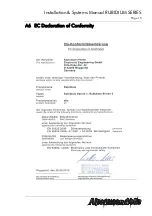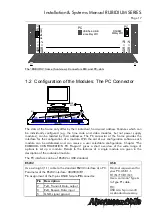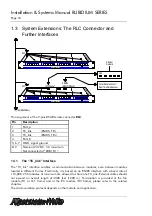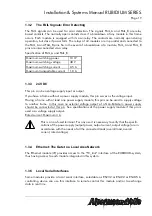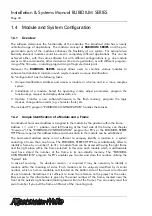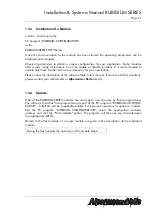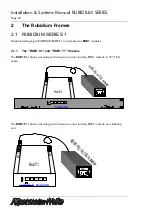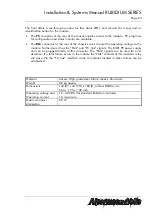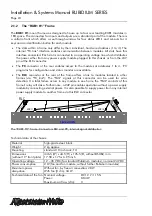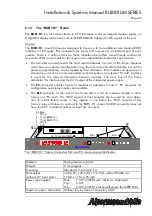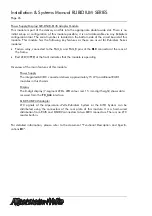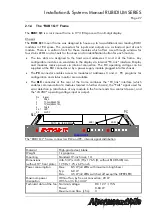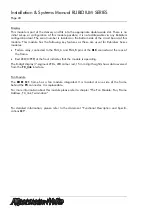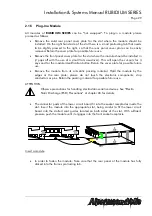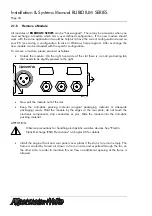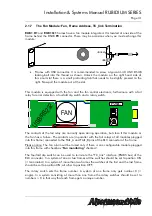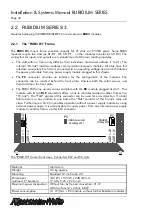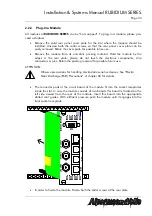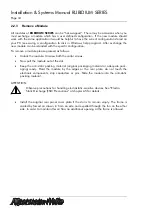
Installation & Systems Manual RUBIDIUM SERIES
Page 19
1.3.2
The FAIL Signals: Error Detecting
The FAIL signals can be used for error detection. The signals FAIL_A and FAIL_B are relay
based contacts. The normally open contacts close if a breakdown of any module in this frame
occurs. Each module is equipped with its own relay. The contacts are normally open during
operation, but close if power fails. The relays of all modules are in parallel and connected to
the FAIL_A and FAIL_B pins. So in the event of a breakdown of a module, FAIL_A and FAIL_B
pins are interconnected via a relay.
Specification of FAIL_A and FAIL_B:
Maximum switching power
10 W
Maximum switching voltage
48 V
Maximum switching current
0.5 A
Maximum transportable current
1.0 A
1.3.3
24 VDC
This pin can be a voltage supply input or output.
If you have a frame without a power supply module, this pin serves as the voltage input.
Having a frame with at least one power supply module, this pin can be used to supply voltage
to another frame. In this case no external voltage output of a Non-Rubidium power supply
should be connected at this pin. See specifications of the power supply module if this pin is
used as a voltage supply output.
Rated current: Maximum 3 A.
This is a non-fused terminal. For any use it is necessary to verify that the specifi-
cations of the power supply (output power, output current, output voltage) are in
accordance with the needs of all the connected loads (overall load, overall
current, rated voltage).
1.3.4
Ethernet: The Gate to a Local Area Network
The Ethernet module (IE) provides access to the “TC_link” interface of the RUBIDIUM system,
thus having access to each module integrated in this system.
1.3.5
Local Serial Interfaces
Some modules provide a local serial interface, selectable as RS232 or RS422 or RS485. A
controlling device can use this interface to remote control this module and/or to exchange
data in real time.

